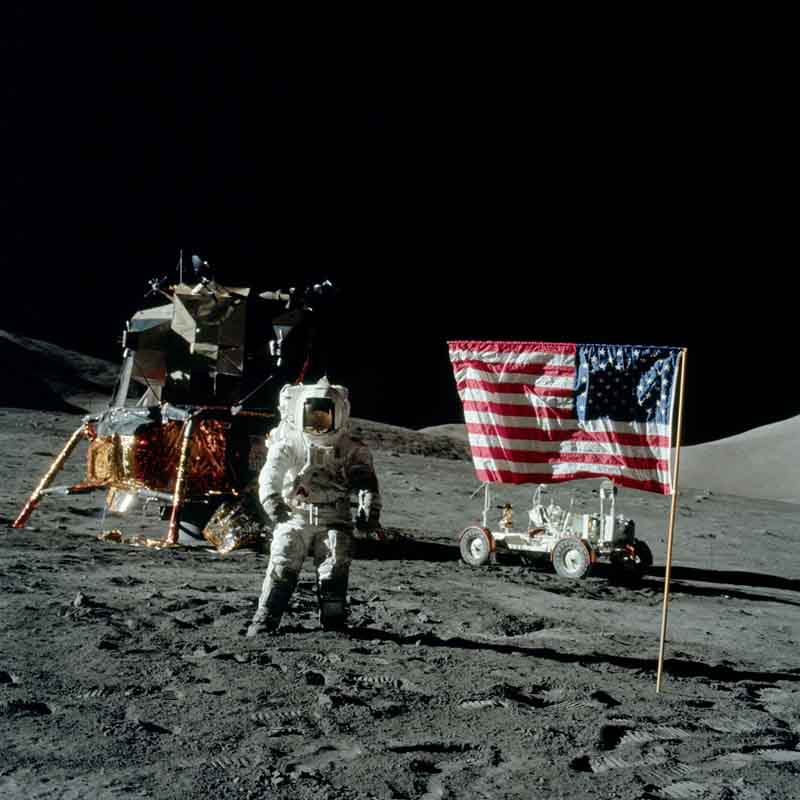 1-AS17-134-20382HR – Jack is standing to the left of the flag, with the Lunar Roving Vehicle (LRV) and the MESA in the background. The LRV was used on Apollo 15, 16 and 17. On Apollo 17 the rover went 35.9 km in 4 hours 26 minutes total drive time. The longest traverse was 20.1 km and the greatest range from the LM was 7.6 km. The LRV was built by Boeing at a final cost of $38 million (1971). Detailed info about the LRV at https://nssdc.gsfc.nasa.gov/planetary/lunar/apollo_lrv.html 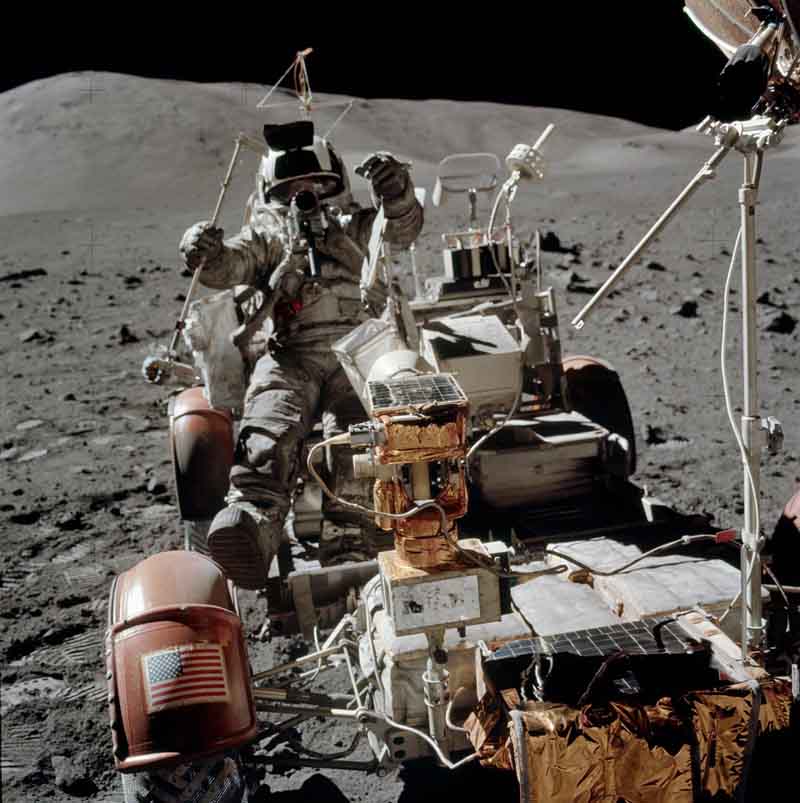 2-AS17-134-20453HR – The second of three photos Gene took of Jack jumping into the LMP Rover seat. Good view of the segmented mirror on the top of the TV camera. Jack has the LRV sampler in his right hand. Note the seismic charge transporter mounted behind Gene's seat, just in front of the rake. Both the low-gain and high-gain antennas are pointed at Earth. The East Massif is in the distance. A labeled detail shows a Velcro strap used to secure the high-gain antenna lead to the high-gain mast. A second detail shows the low-gain antenna lead now secured to something on Gene's side of the console. 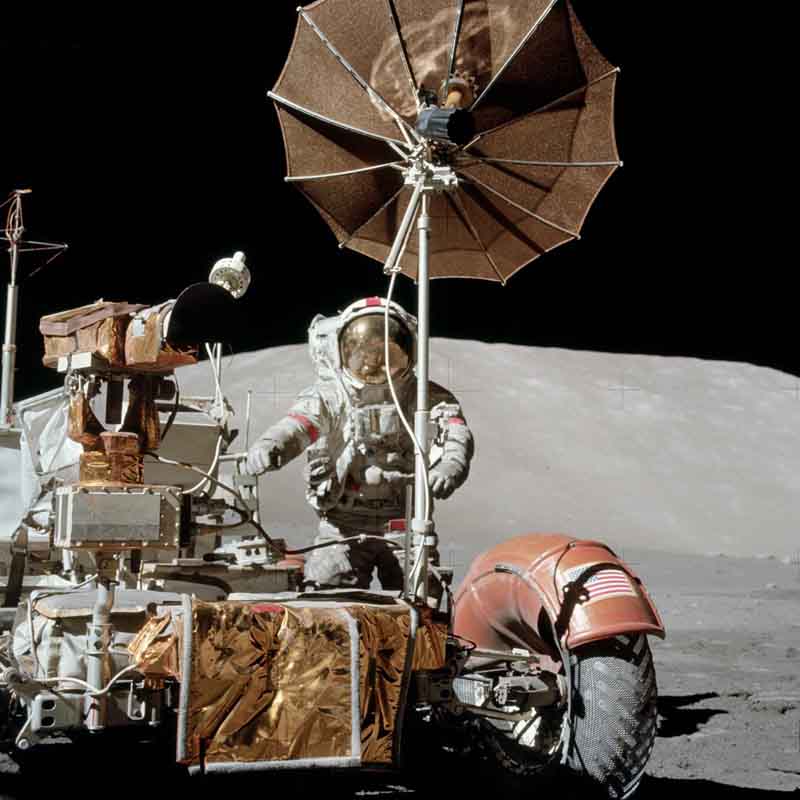 3-AS17-134-20475HR – Jack got the camera from Gene and took a number of pictures of Gene at the Rover. Note the bright pattern on the high-gain antenna, which is sunlight reflected off the top of the TV camera. Note the large boulders in background which are south of Geophone Rock. (In a 2005 discussion with Don McMillan, we were able to explain the shadowing on the antenna. In a detail from 20475, the radial ribs are numbered '1r' clockwise around to '12r' and the outer seams of the mesh from '1s' clockwise to '12s'. Looking at the shadow between ribs 3r and 4r, we see the outer edge of the shadow being cast by seam 3s. This segment of the 3s shadow edge is labeled 3sa. The 3s shadow continues onto with mesh between ribs 4r and 5r. The continuation is labeled 3sb and ends when we getto the shadow of rib 2r. Next clockwise, we see the shadow of seam 2s which falls on the panel between 4r and 5r and continues on the pane between 5r and 65 until we get the the shadow of rib 1r. And so on. Finally, note that, if the antenna wasn't made of mesh and was, instead, made of completely opaque material, panels 4s around to 10s would be copletely shadowed. 12s, 1s, and 2s would be completely illuminated while only portions of 11s and 3s would be in direct sunlight. Consider panel 5s, which is between ribs 4r and 5r. No part of this panel is in full sun. The part outside the 3sb and 2sa shadow edges, the side of the mesh facing away from us is in full sun, but only part of that incident light makes it through by reflecting toward the camera by the mesh wires. On the shadowed part of pan 5s, we are seeing light that made it through panel 2s only 5s and then through 5s to the camera.) 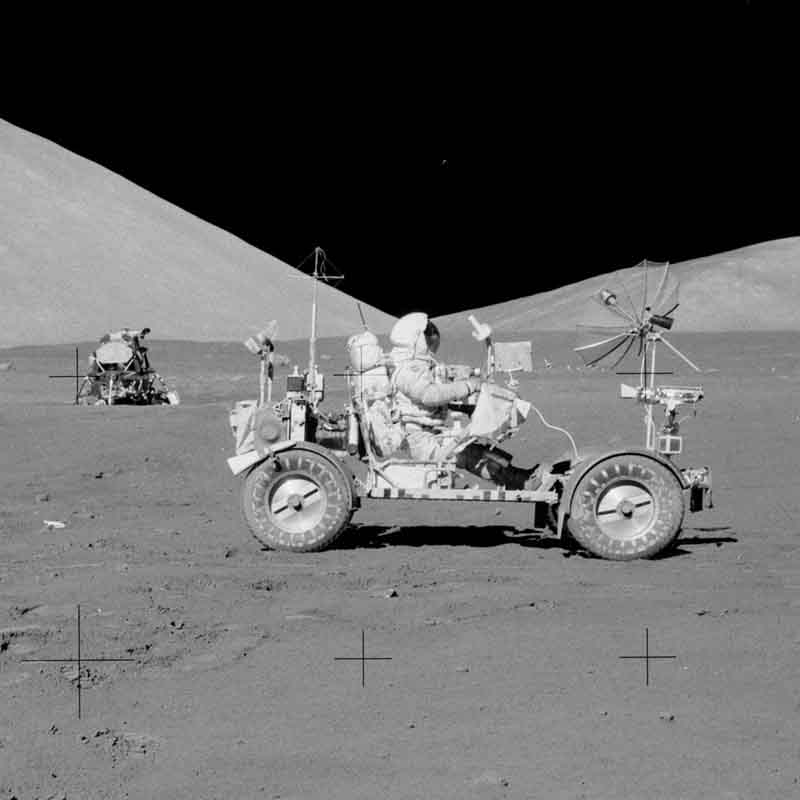 4-AS17-141-21513HR - Gene has positioned the LRV so that he is headed north and is within 5 meters of the north arm and 10 meters of the SEP transmitter. Jack takes a series of pictures to document the location so that the SEP experiments can calibrate their data. 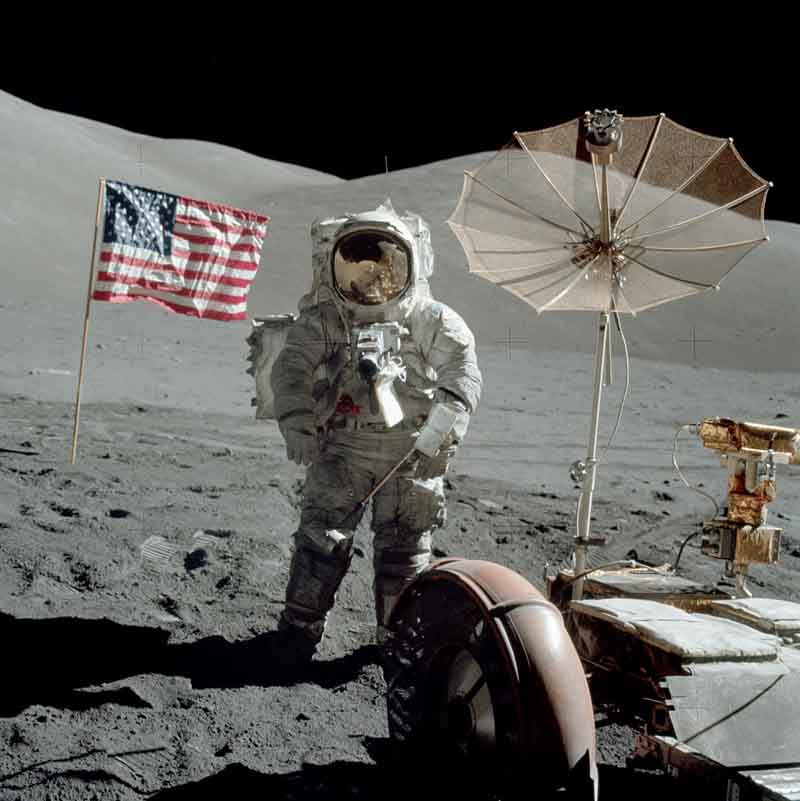 5-AS17-140-21386HR – EVA-3 at the LM. This is the best of the three portraits that Gene took of Jack at the start of EVA-3. Yuri Krasilnikov notes that, as can be seen in a detail, Earth can be seen over the South Massif in reflection from Jack's visor. Indeed, it's visible in the entire series of tourist photos: 21385 to 21391. The best Earth images are in 21386 and 21391. A detailshows Jack's watch and watch band on his left arm and his wrist-mirror band on his right arm. 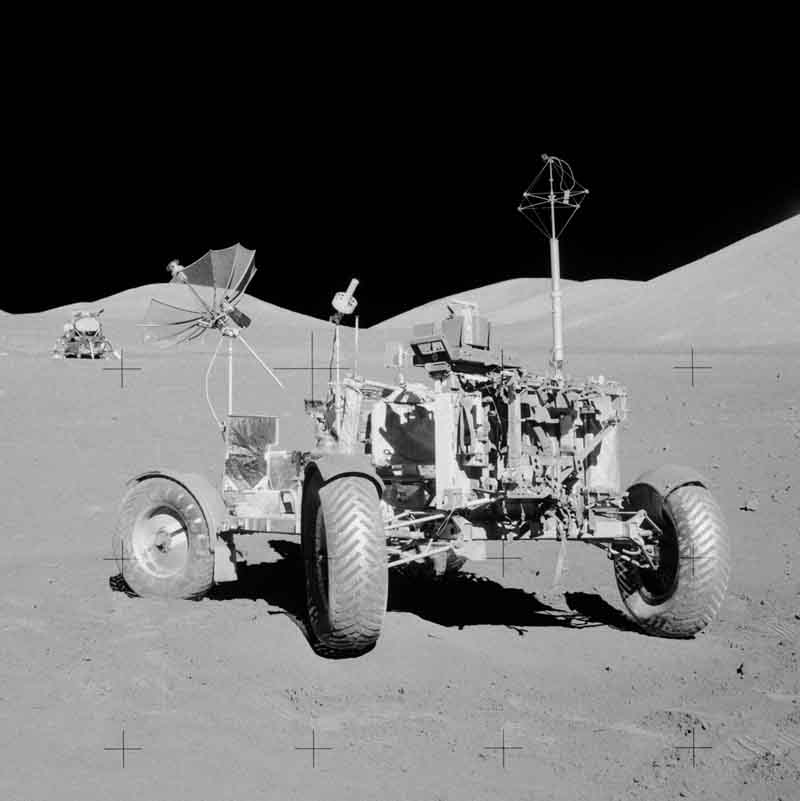 6-AS17-143-21933HR - EVA-3 at the VIP site. Gene took this excellent picture of the LRV at its final parking place about 100 meters east of the LM. it gives good definition of the chevron pattern on the wire-mesh tires. One seismic charge remains in the transporter. Gene will deploy it at the west end of the SEP antenna array at 170:24:16. Note that Gene has already removed the replacement fender. 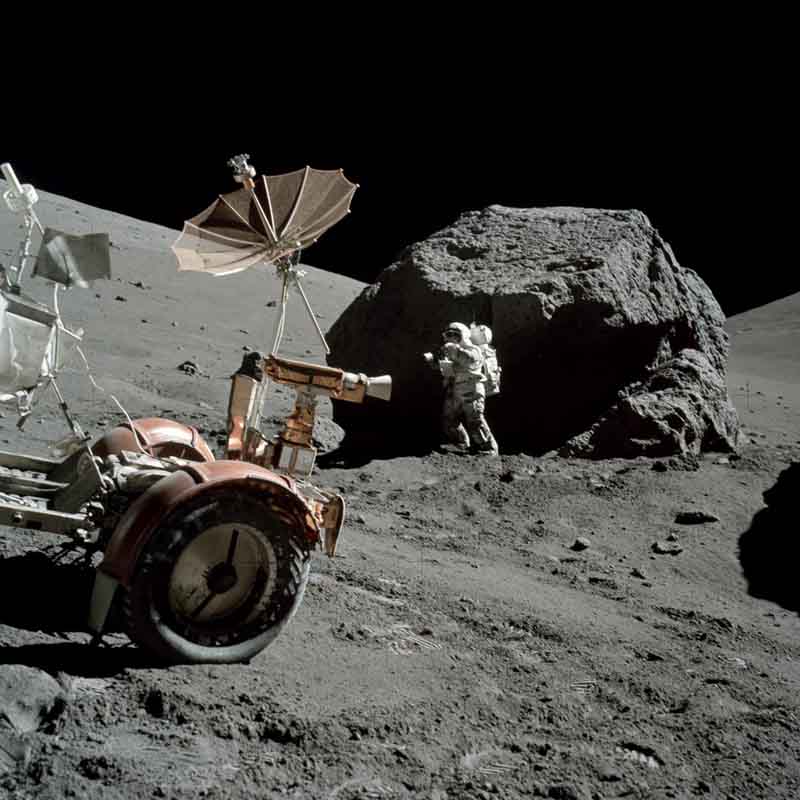 7-AS17-146-22294HR – Station 6 "locator" to the LRV, with Jack in the background taking photos AS17-139-21206 to 21211 and using Fragment 2 to give him some stability. Fragment 3 is the smaller piece of rock that is next to Fragment 2 and to the right of Jack. 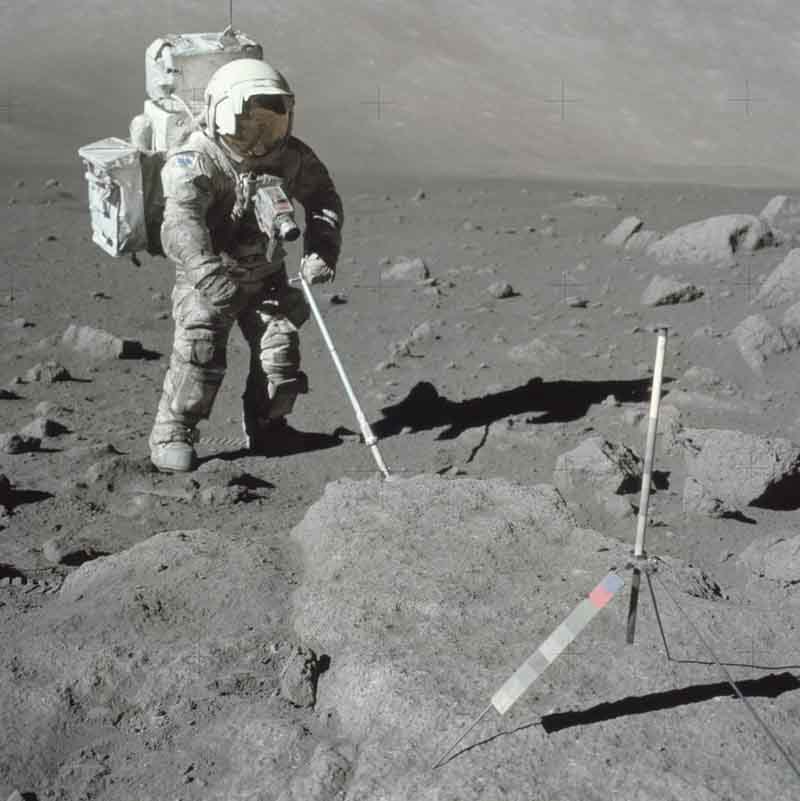 8-AS17-145-22157HR – This Station 5 photo shows Jack collecting a soil sample on the south side of the rim boulders. 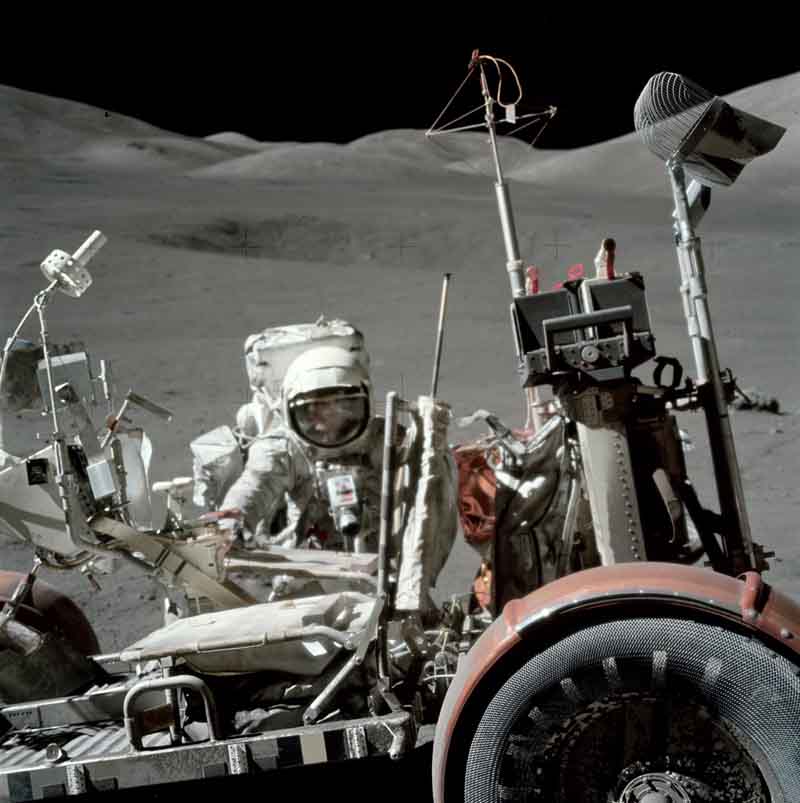 9-AS17-146-22296HR – Station 6. Jack is on the downslope side of the Rover with his visor up. This photo gives us a good view of the rake and the seismic charge transporter behind Gene's seat and, behind Jack's seat, the SEP receiving antenna. In the gap behind the seats, the thermal cover for the top of the SEP receiver hangs down in the open position. Toward the front of the vehicle, note the handhold on the outside edge next to Gene's seat. Jack's LRV Sampler can be seen on the far side of the console and the maps can be seen just below the low-gain antenna. Gene's seatbelt is stowed on the near side of the console. 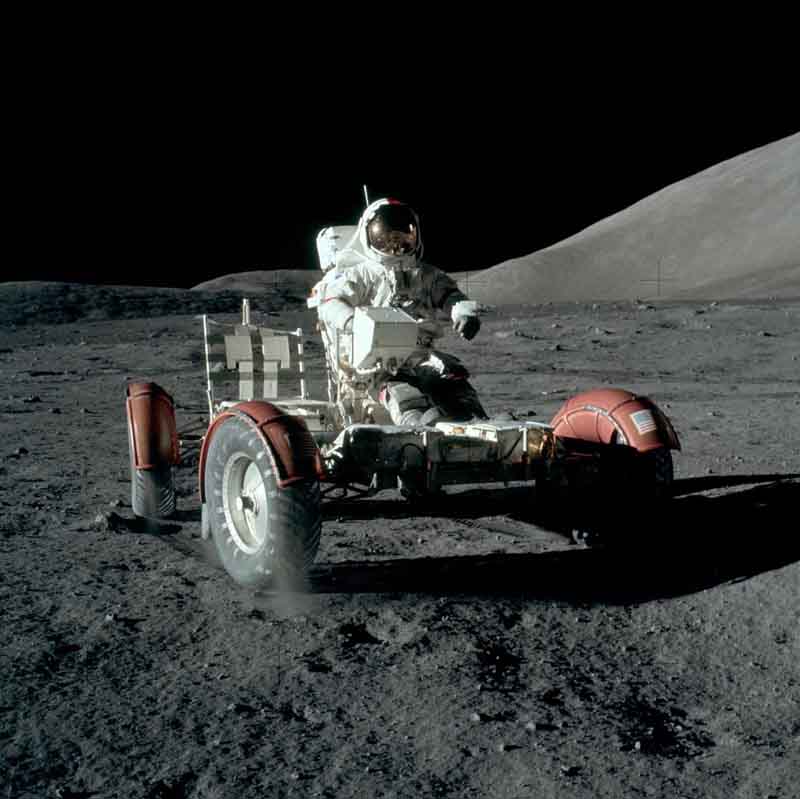 10-AS17-147-22526HR – EVA-1 at the LM. Jack took this picture as Gene approaches him on the LRV during the initial test drive. Note the dust being thrown up by the right-front wheel, even at very low speed. Note that order of the transmitted SSTV images are not in sequence with the timeline of the mission, and neither are the catalogued film magazine and photo archive numbers. 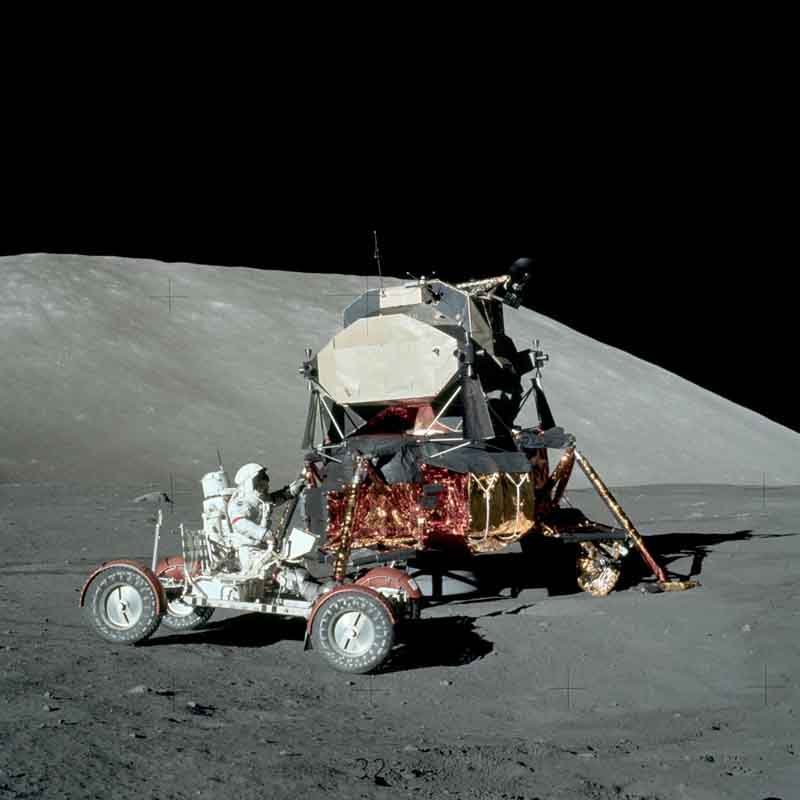 11-AS17-147-22527HR - This excellent picture shows Gene passing between Jack and the LM during the initial test drive. Note the raised geopost behind the seats. 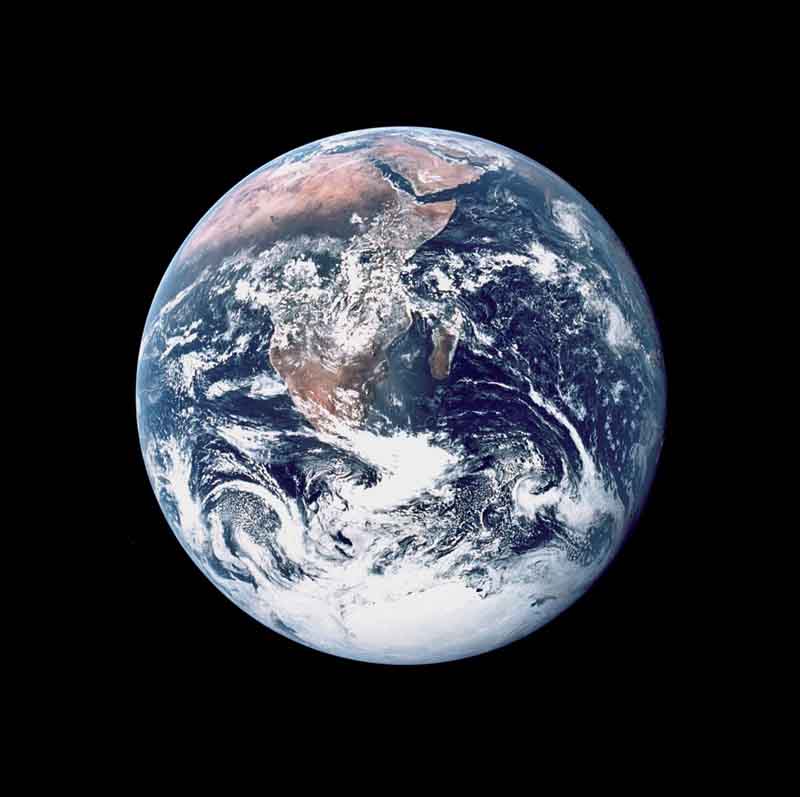 12-AS17-148-22727 – A Full Earth from the Apollo 17 Command Module at about 5 hours 6 minutes, shortly after separation of the docked CSM-LM from the S-IVB at 4 hours 45 minutes. Note that Antarctica is visible; the first time the Apollo flight trajectory made it possible to photograph the south polar ice cap. The eastern coastline of Africa and Arabian Peninsula are clearly visible.
RETURN TO APOLLO 17 INFO PAGE AT: http://www.richmondarc.ca/sstv-apollo17-50th.html |
|
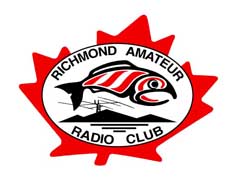 To RARC main Website |
|
| Updated: December 18, 2022 |